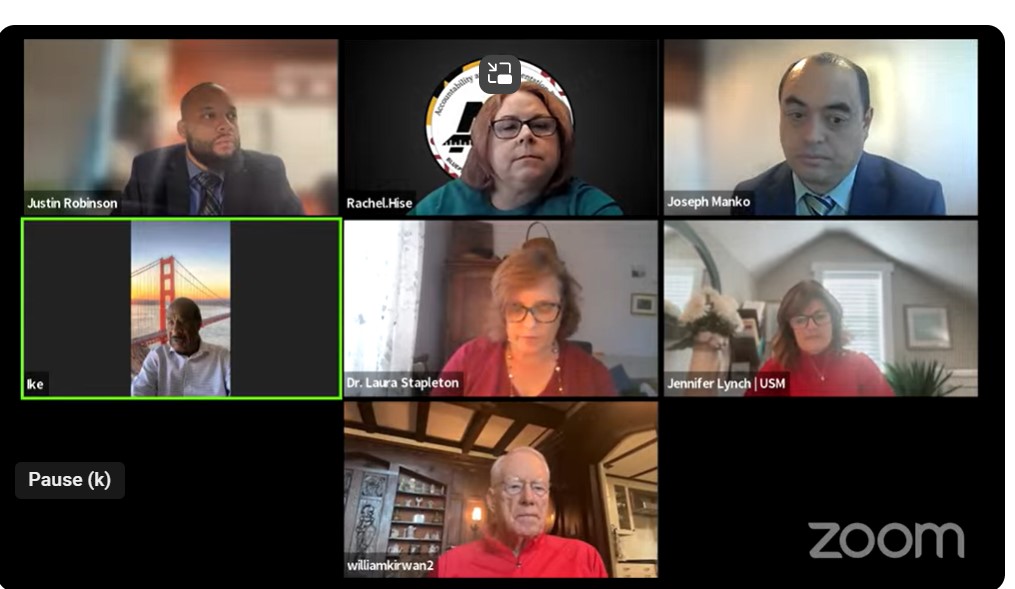The Blueprint for Maryland’s Future Accountability and Implementation Board held its Thursday meeting virtually. Screenshot from AIB video.
The board overseeing implementation of the Blueprint for Maryland’s Future education reform plan approved the first two local school district plans Thursday, capping months of review of the districts’ progress.
The Accountability and Implementation Board (AIB) approved plans Thursday from Garrett and St. Mary’s counties public schools. Those two districts were the only ones who were credited with checking all the boxes on a Blueprint chart reviewed Thursday, outlining progress of the counties on different parts of their plans.
Approval of the plans for those two counties allows the board to release 25% of Blueprint funds that had been withheld from the current fiscal year’s budget.
“We all know that the plans are not just to write a plan,” said AIB Executive Director Rachel Hise. “It’s really to think about and reflect on how things are going to what is already happening and what needs to be done differently in order to achieve the Blueprint goals.”
The board, its staff and the state Department of Education have spent the past several months reviewing the counties’ plans, submitted in March to outline challenges to implement the plan submitted, and follow-up documents filed two months later. The work is to continue through fiscal 2027.
Documents from Garrett and St. Mary’s school districts also include literacy plans to boost student achievement, updates on career counseling activities at middle and high schools, and confirmation that teachers received a 10% salary increase between fiscal years 2019 and 2024. Salary increases are part of a state law requirement for teachers in all 24 school districts to get an annual salary of at least $60,000 by July 1, 2026.
The remaining 22 school districts have until Nov. 12 to submit updated revisions to Blueprint and department staff for review. If no school district plans are approved at the board’s meeting Nov. 21, then a written warning would be issued for local school officials to submit updates by Jan. 16. Those plans would be reviewed at the board’s scheduled Jan. 30 meeting.
Counties that have not had their Blueprint plans approved by Feb. 1 are allowed to appeal the decision, which involves the AIB withholding Blueprint funding.
According to the Blueprint chart cited Thursday, all districts have completed work on most parts of their plans.
Future revisions are needed for 15 school districts to provide explanations on how they would assess budgetary strategies to implement their Blueprint plans. Board staff are also reviewing career ladder plans recently submitted by officials in Anne Arundel, Charles, Prince George’s, Queen Anne’s and Somerset.
Blueprint board member Joseph Manko, education program director at the Abell Foundation, asked if there is updated information available on teacher retention. But Hise said a few more years of data would be needed to measure how the state is doing.
The department released a teacher workforce report this year that included teacher retention. According to that report, teachers with less than three years of experience were the most likely to leave the profession between 2020 and 2024.
The report also highlighted teachers who received National Board Certification, a designation given to those as “accomplished,” or experts in a certain area. The state has more than 1,200 designated as National Board Certified.
The report notes more than 3,000 teachers last school year registered to receive “fee support” to pursue the certification. Once certified, the Blueprint allows them to become eligible for a $10,000 raise, with an additional $7,000 for those who teach at an “identified low-performing school.”
“The logic flows that if you have more teachers that either secured National Board Certification or are going through the national board process, those teachers are less likely to leave the profession,” Manko said.

